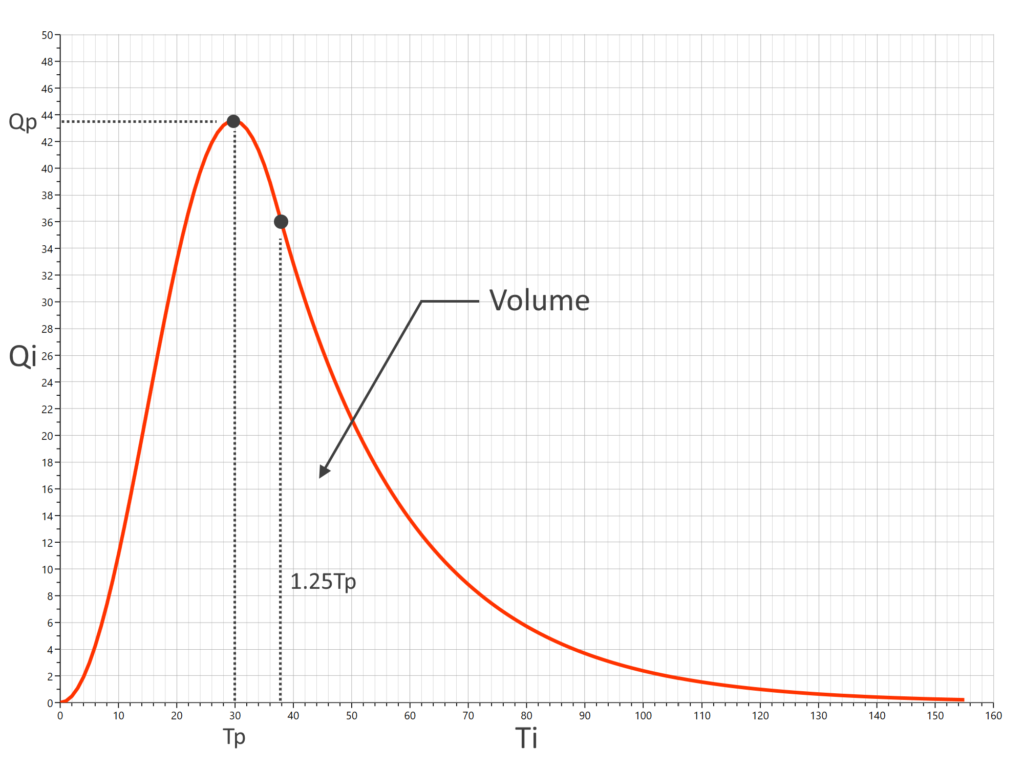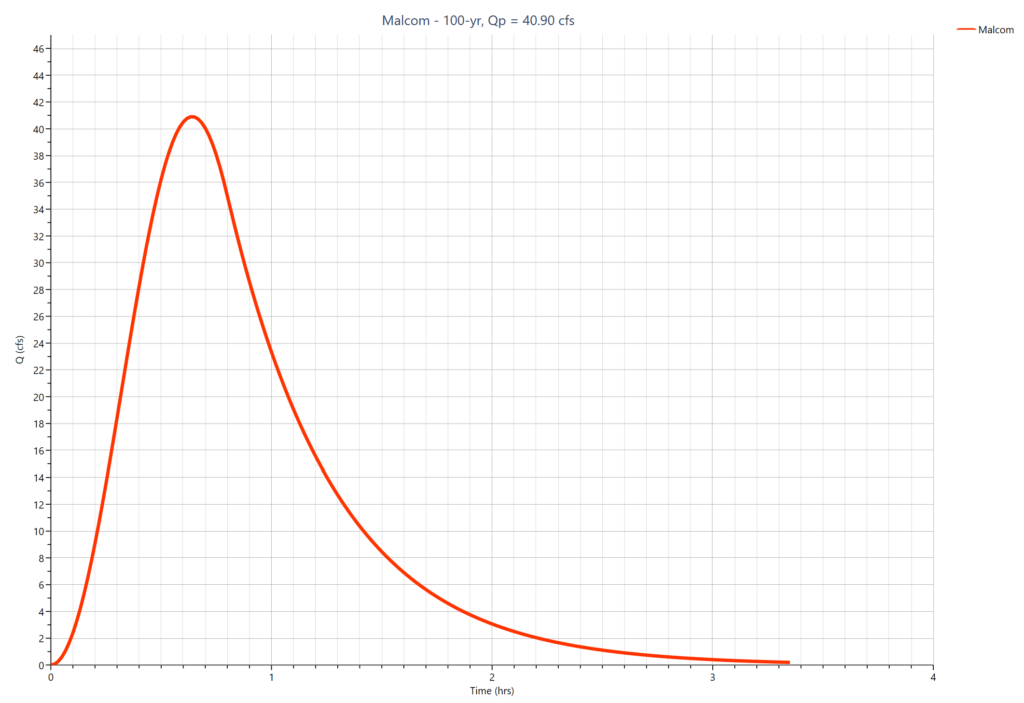The Malcom method hydrograph, also known as the Small Watershed Hydrograph Method, originated from a watershed research study led by H. Rooney Malcom in 1980 in North Carolina.
The Malcom hydrograph is constructed in a way that closely resembles the shape of the NRCS Unit hydrograph. It employes two distinct equations to compute flows, Qi, at a given time, ti.
Malcom Method Equations




Where:
Tp = Time to Peak
V = Volume (cuft) = Excess precipitation, Q, of the currently selected NRCS design storm (in) x Drainage Area (ac) x 43,560/12
Qp = Peak discharge as calculated by the Rational method (Qp = CiA)
Ti = Time in seconds
Qi = Discharge in cfs at Ti
Note that the total precipitation, P, is pulled from the currently selected design storm. The excess precipitation, Q, is calculated from the following curve number equation:

Where:
Q = Excess volume of precipitation (in)
P = Total precipitation (in) for the selected design storm
S = Potential maximum retention
= (1000 / CN) – 10
CN = Curve Number (Hydrology Studio’s published tables of Curve Numbers assumes an antecedent moisture condition of II)
It is essential to recognize that this method necessitates both a Curve Number (CN) and a Runoff Coefficient (C). These values must accurately reflect their associated land use. Below is a straightforward approach to derive an equivalent CN from a Rational Method C. It is logical to conclude that the Rational Method C indicates a percentage of imperviousness; for instance, a C value of 0.60 signifies 60% impervious surface. An equivalent CN can be calculated as:

Where:
IMP = % impervious
X is taken from the table below and is based on the Soil Type.
| Soil Type | A | B | C | D |
|---|---|---|---|---|
| X = | 39 | 61 | 74 | 80 |
For a C = 0.60 and a Soil Type C, an equivalent CN is 98(.60) + 74(1-0.60) = 88.40.

The Malcom method combines the advantages of both approaches, offering the straightforward Peak Q from the Rational method alongside the realistic volume estimates provided by the NRCS method.
